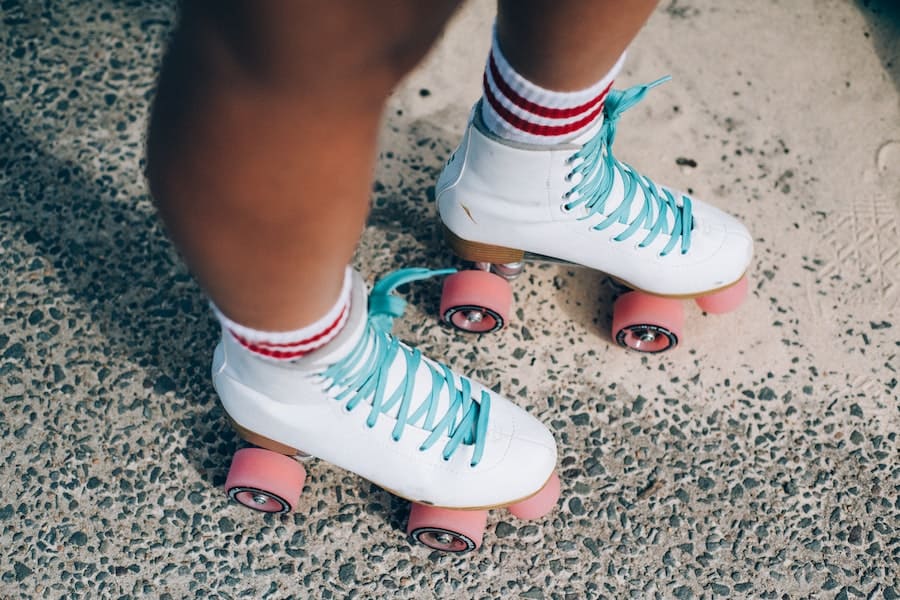Many runners know the benefits of compression socks, but few actually wear them before or after their runs. This is a mistake because they offer important benefits for runners — no matter how long or short your distances are. Compression socks help your circulation and generally improve recovery time after exercise by increasing blood flow to your legs. They also reduce swelling, which can be particularly beneficial if you’re prone to getting swollen ankles post-run. On top of that, they also prevent ligament pain after a long or stressful run. It’s a win-win! Read on to learn why you should wear compression socks as a runner.
Why do Runners Wear Compression Socks?
Compression socks are designed to provide support and alleviate pain. The socks can be worn while running or at any time of the day. They can be worn to work or while lounging at home. The socks can be worn both indoors and outdoors.
Why You Should Wear Compression Socks During Your Run?
They help with recovery time
Runners experience a lot of pressure on their legs as they run. Whether you are just beginning to run or have been doing so for years, your legs take a lot of force and pressure, which can lead to serious discomfort and pain. Compression socks help with this discomfort by providing a gentle squeeze all the way up to just below the knee. This gentle squeezing helps blood circulate more efficiently, which can help with recovery time. Runners often experience muscle fatigue after long runs, and wearing compression socks post-run can be especially helpful for longer activities that involve demanding muscles such as your calves or shins. They can help reduce swelling and promote overall faster healing and recovery.
They can prevent injuries
In addition to aiding in post-run recovery, compression socks can also prevent injuries before they ever happen. By increasing blood flow, these socks can help prevent your shins and calves from cramping up. Cramping is one of the most common injuries runners experience, and compression socks can help with this problem. They can also help prevent blisters. Although blisters are more often associated with shoes than they are with socks, they can still be a problem while wearing compression socks. To help prevent blisters, you can try different sock fabrics to find the one that works best for you.
They provide arch and calf support
Runners often over-pronate or roll inward too much, which puts added pressure on the arch of the foot. Compression socks can help control this over-pronation and provide better support for your arches. They can also help prevent shin splints. If you experience pain in the inside part of your leg, you may be experiencing shin splints. Compression socks can help improve circulation and reduce this pain. Compression socks can also prevent cramps in your calves, which are often responsible for cramps further up in the leg.
They wick away moisture and sweat
Compression socks are made from materials that wick away moisture and sweat from the foot. This is especially helpful to runners in warm climates. They also help prevent blisters.
Runners can wear them for aesthetic purposes as well
Compression socks can definitely help with the benefits listed above, but runners can also wear them for aesthetic purposes as well. Many runners prefer to wear compression socks over other types of socks simply because they look sportier and more appealing than other options. There are also different styles and colors of compression socks available, so runners can easily find a pair they like.
Why You Should Wear Compression Socks After Your Run?
While many runners simply don’t think about wearing compression socks before their run, it’s just as important to wear them after your run too. Here are just a few of the perks:
- Reduced swelling – Compression socks are also helpful for reducing swelling after your run. Swelling is a normal part of the muscle recovery process, but it can be uncomfortable. Compression socks can help reduce swelling and make it easier to recover.
- Better circulation – Compression socks can also help improve circulation after your run, which can lead to faster recovery.
- Prevent pain – Compression socks can also help prevent post-run pain in your ankles and legs.
- Better sleep – Lastly, wearing compression socks after your run can also help you sleep better, because of the reduced swelling.
The Best Ways To Wear Compression Socks
Traveling
Traveling might seem like a simple activity that requires few accessories, but it can actually be quite stressful for your body. Whether you’re sitting in a cramped economy seat, hiking a mountain trail, or riding in a car for hours, traveling can take a heavy toll on your muscles, joints, and other parts of the body. Compression socks are a great way to address these issues while traveling. They can help reduce swelling and pain in your feet, ankles, and calves, so you can be more comfortable while walking around the airport or on your outdoor adventure. They’re also useful to address swelling in your lower legs during long flights when your blood tends to pool in your lower body. By reducing swelling, compression socks can help you stay comfortable and be more productive on your trip.
Working Out
Working out is a great way to boost your health and fitness, but it comes with a risk of injury. When you exercise, you put a strain on your muscles and other parts of your body, which can lead to pain and other issues. Compression socks can help improve your workout by reducing the risk of injury. They can help increase blood flow to the muscles in your legs, which is a crucial part of getting the nutrients needed for vigorous exercise. In addition, compression socks can help prevent swelling in your lower body, which can be a serious issue for athletes and others who work out regularly. By improving blood flow and reducing swelling, compression socks can make it easier to work out, while also helping you recover faster after your workout is finished.
Running Errands
Sporting compression socks don’t always have to mean hitting the gym or getting ready for a big athletic event. They can also be a great way to dress for everyday activities, like running errands, going to the grocery store, or even going to work. Compression socks are useful for more than just keeping your muscles and joints healthy. They are also a great way to stay fashionable, particularly if you are a man or woman who enjoys wearing business casual clothing. They come in a variety of styles, patterns, and colors, so you can choose a pair that matches your fashion sense. Compression socks can also be a helpful tool if you have a medical condition that causes swelling or if you’re at risk of developing blood clots.
Benefits Of Wearing Compression Socks
Beyond the obvious benefits listed above, there are other reasons why you should consider wearing compression socks as a runner. Here are just a few of them: –
- Improved circulation can help prevent cramps – Improved circulation can also help prevent cramps, so if you’re prone to them — compression socks may help.
- Better circulation can also boost your immune system – If you’re running during cold and flu season, better circulation can also boost your immune system to help you fight off any germs you encounter.
- Compression socks can help prevent shin splints – If you have a history of shin splints, compression socks can help prevent them.
- Compression socks can help prevent injury – Last but not least, compression socks can also help prevent injury. If you have weak ankles, they can help support them.
How To Choose The Right Type Of Compression Sock?
- There are many different types of compression socks, but they all work by increasing blood flow to your lower legs. When you put them on, they squeeze your ankles and calves, which increases circulation to your feet and toes.
- There are many different types of compression socks, and they vary in thickness. Generally, the thicker the sock, the more it will compress your feet and ankles. So how do you know which thickness to get? Well, the thickness of the socks will depend on your individual needs.
- If you have poor circulation, you may want to get a pair of compression socks that are a little thicker. If you’re more prone to swollen ankles and feet, thinner compression socks may do the trick.
- Compression socks also come in different lengths. They vary from short to knee-high compression socks. The shorter socks are great for shorter runs, while knee-high socks are better for longer runs.
Conclusion
They can help improve blood flow, reduce muscle fatigue, improve recovery, and prevent both cramps and shin splints. They also boost your immune system, help prevent injury, and can even help prevent foot swelling. The only question is: what type of compression socks should you get? Well, there are many different types to choose from, and they vary in thickness. Make sure you pick the right thickness to meet your needs so you can get the most out of your compression socks.








